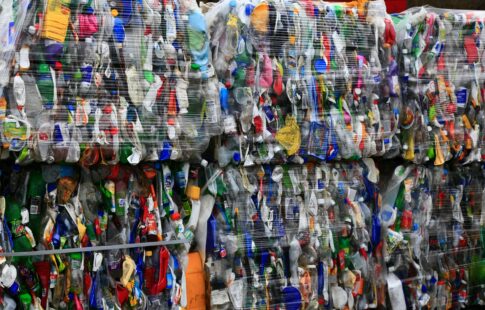
Real-Life Environmental Ethics Examples to Make You Think
We are reader-supported. When you buy through links on our site, we may earn affiliate commission.
Most people have an idea of what is right or wrong regarding the natural world. However, these perspectives vary according to individual morals. It is easiest to apply value to the environment when you have real-life environmental ethics examples to go by.
The truth is humanity confronts these ecological questions daily. Here are the primary themes of environmental ethics and three well-known examples to make you consider where you stand on some core issues.
Primary Themes of Environmental Ethics
Before diving into actionable environmental ethics examples, you must understand the field’s primary themes, some of which overlap. These themes — or attitudes — about nature and life shape the ecological challenges humans face worldwide.
Anthropocentrism vs. Non-Anthropocentrism
Whereas anthropocentrism is the belief human life is most significant — either because of advanced development or their rightful existence— non-anthropocentrism gives value to everything. Anthropocentric-minded individuals view nature and wildlife as a means of survival — for instance, early hominins consumed meat and marrow from large and small mammals as part of their diet.
Conversely, non-anthropocentrism asks you to prioritize the well-being of all sentient beings and ecosystems, either above or in alignment with human interests.
Animal Liberation and Welfare
Animal liberation pertains to giving welfare rights to animals by implementing and enforcing laws. Likewise, animal welfare is about proper, humane treatment of animals. Emphasis is placed on minimizing suffering and treating animals with greater compassion.
Instrumental vs. Intrinsic vs. Aesthetic Value
The key differences between instrumental, intrinsic and aesthetic value in environmental ethics are as follows:
- Instrumental: Places value on nature only if it serves humans’ needs
- Intrinsic: Applies inherent value to nature, whether it is useful to humans or not
- Aesthetic: Gives worth to nature’s intrinsic beauty
The Other “-isms”
Other everyday environmental ethics themes coincidentally end in “ism.” You will see the following ideologies appear throughout ecological-ethical studies.
Resourcism
Those with a “resourcism” perspective believe humans are distinct from the natural world — that the purpose of natural resources is for human benefit. Of course, this notion arose when resource consumption was far less than in modern times. Resources are not infinitely expendable, though. Societies must alter their use accordingly.
Psychocentrism
The psychocentric belief is that humans hold more power and importance than nature and wildlife. This perspective derives from the fact humans are cognitively developed more than other species or environmental components.
Biocentrism
Biocentrism is the ethical perspective that all beings hold inherent ecological and political value — meaning humans and nature alike are equal and deserve like-minded moral regard. People understand all beings are one with the Earth and that humans are not superior to other life.
Holism
Generally, holism is the belief humans have a moral responsibility to conserve the natural world. The ethical perspective was first associated with Aldo Leopold’s Land Ethic — defining “community” as an Earthly population beyond humans, including animals, flora, water, and soil.
Speciesism
Speciesism is the opposite of holism — the attitude that humans are superior to all living things. Some also refer to this as “dominionism.” Experts worry this mindset presents ample challenges for the planet, especially since what one does can negatively impact another.
3 Important Environmental Ethics Examples in Action
Learning ecological-ethical themes allows you to make an informed decision about where you stand on various environmental issues. Here are three of the most commonly talked about environmental ethics examples we’re experiencing today.
1. Consuming Animals: Necessary for Survival or Inhumane?
Except for a handful of cultures, few would eat dogs — humans’ most faithful companions. However, many wouldn’t think twice about consuming chicken, pork, beef or lamb as part of their regular diets.
Of course, the ethics of eating animals, in general, is debatable. People with holism, biocentrism and non-anthropocentrism attitudes might agree we should eat more plant-based foods instead. Conversely, those who lean toward speciesism and resourcism might argue animals were put on Earth for human consumption.
Then you have populations from developing countries facing hunger — 149 million children under five suffer from malnutrition, with a death rate of 45%. These children need animal products to prevent vitamin A and iron deficiencies.
You might also wonder about cultured meat. Although recent developments in stem cell collection and in-vitro technology have successfully resulted in lab-grown meat, animals might still endure inhumane conditions and procedures to extract those stem cells.
2. Economic Valuation of Resources: Risk Overconsumption for Prosperity?
Resourcism is closely tied to economism, in which humans have given monetary value to natural resources. Air, water, and other common pool resources are crucial to supplying food, building materials, recreation, and a robust economy. However, a grave disconnect exists between our economic state and the natural world — also called the “tragedy of the commons.”
One example is coffee consumption. Coffee plants naturally occur, but excessive production has resulted in lost habitat. Even worse, 60% of coffee plant species are at risk of extinction.
Our fixation on cars for getting to and from places is another example. Traffic congestion reduces air quality and leads to 2,200 premature deaths annually — yet we must all breathe the same air.
And what about water? Agriculture uses 70% of the daily water consumption for irrigation. Meanwhile, we’ve polluted 83% of U.S. waterways with per- and polyfluoroalkyl substances (PFAS) — “forever chemicals.” To what extent? Humans and nature need water for survival, but we contaminate our essential water sources for the sake of economic prosperity.
3. Natural Beauty: A Landscape Worth Saving?
According to a 2021 study, Peyto Lake in the Canadian Rockies — a pristine glacier-fed water body — is the most beautiful place on Earth. It’s little wonder why — a breathtaking mountain range and lush forest surround its turquoise waters.
Developers might see past Peyto Lake’s beauty and view it as holding instrumental value — an opportunity to build anew or produce timber. Others will apply aesthetic value based on how the scenery fills them with emotion or their connection to the land. But is one stance right over the other in this situation? The Bureau of Land Management (BLM) might think so.
Federal protections over U.S. national parks best represent aesthetic value. The U.S. has designated 425 national park sites spanning 84 million acres, including the five unincorporated U.S. territories.
The BLM recently proposed 10-year leases for restoration projects — an initiative widely backed by scientists and the public. However, in Colorado’s Western Slope, the BLM manages one million acres of land for oil and natural gas drilling.
The new proposal has oil and gas companies gearing up for a fight as two million acres of mineral-rich land could become tied up under stronger federal protections. If approved, the BLM could focus on improving public lands’ aesthetics and reconstructing degraded habitats for a much healthier ecosystem.
Where Do You Stand on the Environment?
Deciding your stance on vital environmental ethics issues will test your morals. You might see things from both sides or lean deeply into one. Nevertheless, you can apply environmental ethics to just about anything, from genetically modified foods to renewable energy to conserving endangered species.
Share on
Like what you read? Join other Environment.co readers!
Get the latest updates on our planet by subscribing to the Environment.co newsletter!
About the author
Jane Marsh
Starting from an early age, Jane Marsh loved all animals and became a budding environmentalist. Now, Jane works as the Editor-in-Chief of Environment.co where she covers topics related to climate policy, renewable energy, the food industry, and more.





